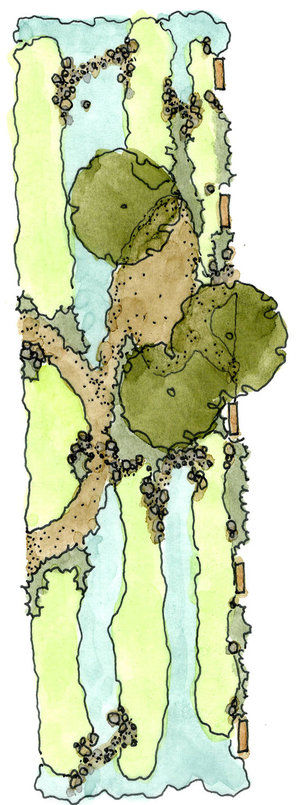
Businesses
Follow common sense practices to reduce or eliminate stormwater pollution.
Developer
Provision C.3 of the Municipal Regional Stormwater Permit requires site designs for new developments and redevelopments to minimize the area of new roofs and paving. Where feasible, pervious surfaces should be used instead of paving so that runoff can infiltrate to the underlying soil. Remaining runoff from impervious areas must be captured and used or treated using bioretention. In some developments, the rates and durations of site runoff must also be controlled.
- NEW! C.3. FAQ Describing New Permit (MRP3) updates
- In the Cities of Fairfield and Suisun City reference the C.3 Guidebook and the Hydromodification Management Plan
- The City of Vallejo consulted with Contra Costa Clean Water Program Staff and adopted the CCCWP Stormwater C.3 Guidebook and associated guidance for use within Vallejo
In addition, project applicants must execute agreements to allow municipalities to verify that stormwater treatment and flow-control facilities are maintained in perpetuity.
Additionally, each member of the Alliance has a Green Stormwater Infrastructure Workplan.
The C.3 requirements are separate from, and in addition to, requirements for erosion and sediment control and for pollution prevention measures during construction.

Need resources to design landscape areas to soak up rain and reduce impervious areas?
- Landscape Infiltration Fact Sheet
- Pervious Paving Fact Sheet
- Rain Barrel Fact Sheet
- Rain Garden Fact Sheet
- Start at the Source (a design manual for stormwater quality protection)
- Using Design Techniques to Meet Development Standards for Storm Water Quality
Contractor
Many common activities can lead to water pollution if you’re not careful.
- Check out these tips to avoid materials and excess concrete or mortar blowing or washing into the storm drains
- Rinse latex paint tools in a sink, not outdoors. Also, clean up toxic spills like motor oil, paint, and antifreeze with an absorbent material and dispose of soiled absorbent properly




Landscaping
- Use best practices to avoid pollution from surface cleaning, more information in this brochure
- Dirt, leaves and lawn clippings can clog storm drains and choke creeks. Rake or sweep to clean up outside. Compost leaves and yard clippings, or recycle them.
- Landscape with plants that discourage pests and have low requirements for water, fertilizers and pesticides. Visit OurWaterOurWorld for less toxic solutions to common house and garden pests
- Use these tips to encourage water to soak into your landscape
Mobile Businesses
Mobile businesses are integral to our community and like other businesses need to properly dispose of their waste products.
Mobile businesses such as food trucks, power washers and car detailers need to prevent waste and wastewater from entering storm drains and polluting streams, rivers, bays and the ocean. More information in this brochure and specifically for food trucks.
Food Services
Follow good housekeeping practices to save money and drastically reduce the chance of clogging drains with food, trash, and grease.
Automotive
It’s always easier to prevent pollution than it is to clean it up after the fact.
Pest Control Operators
Visit OurWaterOurWorld for less toxic solutions to common house and garden pests.
Get more details about these practices!
